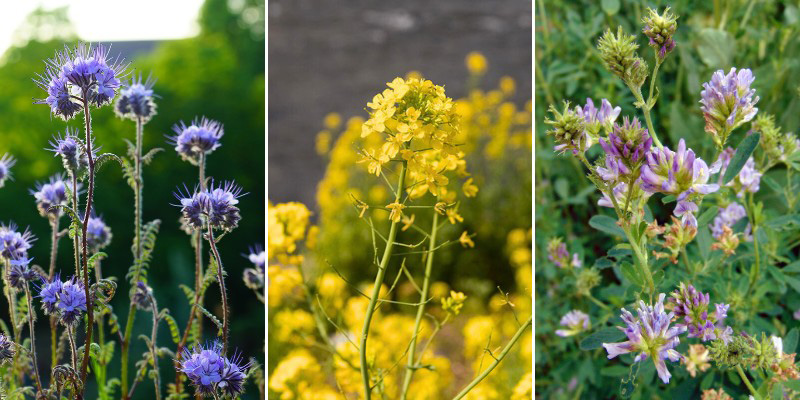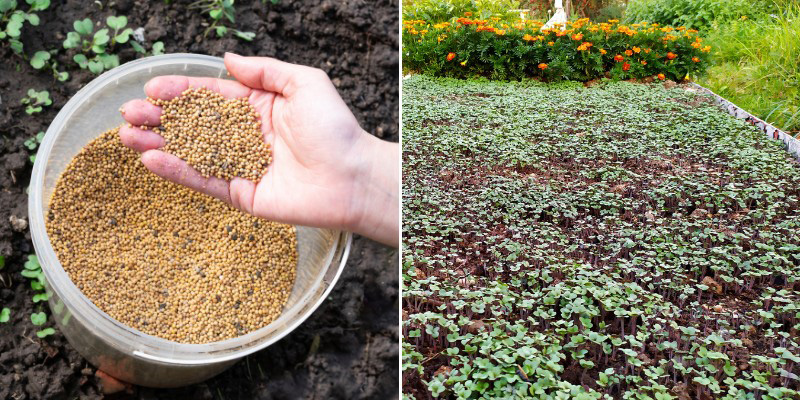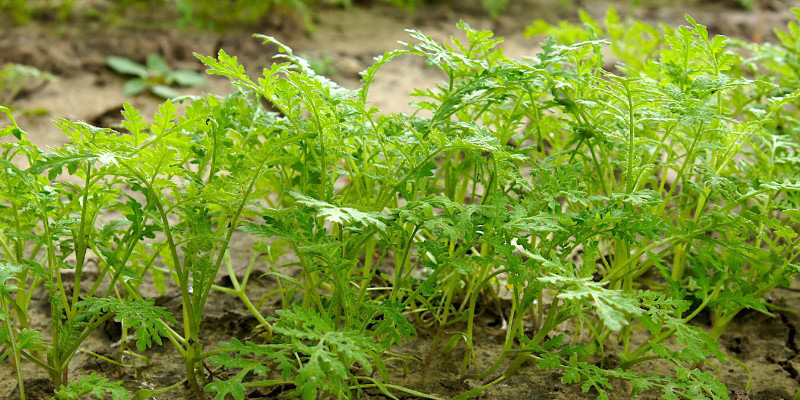Green fertilisers are plants grown temporarily to improve soil fertility and structure. They offer many benefits for garden and vegetable garden. They are generally legumes (clover, sweet clover, lucerne, sainfoin…), grasses (oats, rye, wheat…) or brassicas (mustard, oilseed rape…). These plants help enrich soil, decompact it, protect it from erosion and limit weed growth. Green fertilisers are not intended to be harvested: they are mown after flowering and before setting seed, so they can be incorporated into soil. Discover all our tips on how to sow green fertilisers!
Also discover our advice sheet: "Green manures: why and how?"
Why grow green fertilisers?
Green fertilisers improve soil in several ways:
- They enrich soil with nitrogen and organic matter. This is especially true for legumes such as clover or lucerne, which can fix nitrogen from the air into the soil thanks to bacteria present in their roots. When these plants decompose, they return that nitrogen to soil, making it available for following crops.
- They improve soil structure. Their root system aerates soil and facilitates penetration of water and nutrients. When they break down, they provide organic matter that supports soil microbial life and improves water retention. Grasses are generally most effective at decompacting soil.
- Finally, green fertilisers can also act as ground cover to protect soil from erosion and compaction, and to smother weeds. Brassicas are ideal for forming a dense vegetative cover.
Choose the right species depending on effect you want to obtain: is priority to enrich soil with nitrogen, to decompact it or to cover soil to limit weed growth? It is also possible to sow a mixture combining several green fertiliser species to benefit from their combined advantages.

When to sow a green fertiliser?
If you want to grow green fertilisers in the vegetable garden immediately after growing your vegetables, sow them as soon as you have harvested the last vegetables, while soil is bare. Ideally do not wait, because bare soil is prone to erosion and weeds may also develop. It is also possible to intercrop or to sow green fertilisers at the same time as you sow or plant vegetables, in early spring, after last frosts, to bury them in autumn.
Green fertilisers can be sown from March to October, depending on cultivation method and species chosen. Most common timing is late summer or autumn, which avoids leaving soil bare over winter.
For example, clover, lupin, sweet clover, lucerne and sainfoin are sown from mid-August to September. Winter vetch, mustard and grasses are sown slightly later, in autumn (September-October).
Equipment needed
- Green fertiliser seeds. You can opt for a single species or for a seed mixture.
- A grelinette, a biofork or a digging fork, to aerate soil before sowing.
- A cultivator or claw
- A rake, to level soil and lightly cover seeds after sowing.
- A watering can with rose or a hose, depending on area you cultivate

How to sow?
It is possible to sow green fertilisers as a mixture, combining for example a grass and a legume, to take advantage of benefits of both crops.
- Start by preparing soil: work soil superficially with a cultivator (avoid turning soil over), remove weeds and large stones, and break up clods.
- Then level soil using a rake or a cultivator.
- Sow seeds broadcast, distributing them evenly over soil. It is also possible to sow in drills.
- Scatter a little topsoil to lightly cover seeds.
- Firm gently using back of a rake or a lawn roller.
- Water with a fine spray, using a watering can with rose or a hose.
Then leave seeds to grow for several months. Remember to mow and shred green fertiliser before it sets seed. Leave it on soil, then incorporate it. Green fertiliser is usually mown in late winter, before growing vegetables again.

































Comments